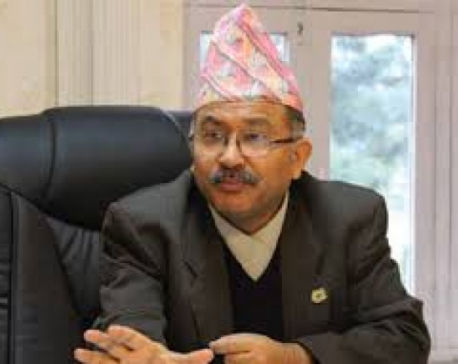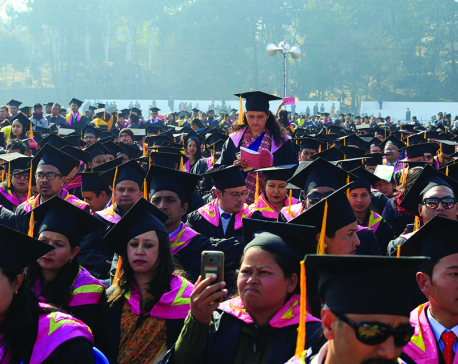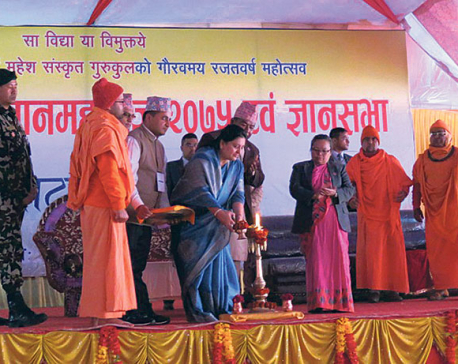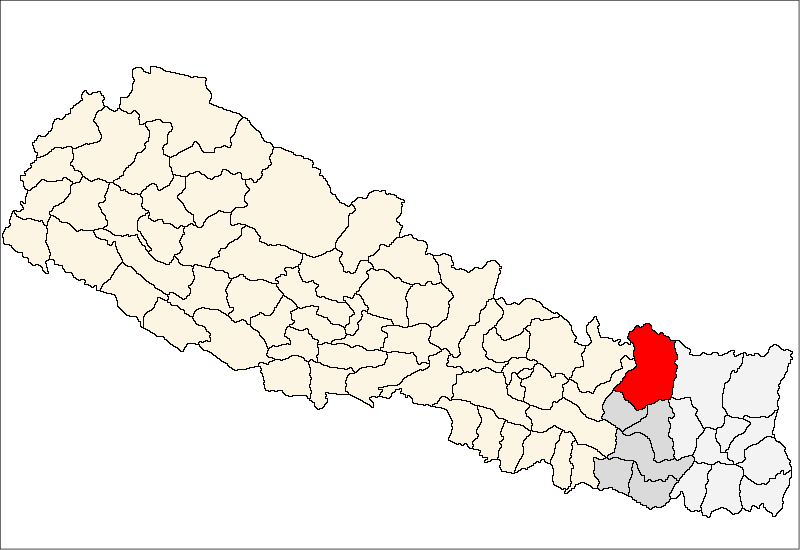
OR
#OPINION
Connecting the Education System with the Labor Market Needs
Published On: November 6, 2023 08:30 AM NPT By: Hari Prasad Shrestha

More from Author
- Why Federalism has Become Risky for Nepalese Democracy
- Hunger is a Serious Problem in South Asia
- Tourism Can Be A Catalyst For Change in Karnali Province
- Nepal’s Southern Border Has Become An Open Regional Crossroads
- Opening a new gateway for Kailash Mansarovar Yatra through Nepalgunj-GunshaNagari flight
Compared to admissions for academic degrees, the number of students enrolled in technical and vocational education is only about 1 percent.
It is necessary to connect our education system with the labor market needs, which could support the employability of the educated and trained people, reduce skills imbalances and improve the resilience of the workforce to future changes in labor market demand. This is also known as responsiveness of the education system.
Our education system is not well connected with the labor market demands. It is producing less numbers of manpowers suitable for job demand in the market and producing high numbers of manpower for employment in overseas countries. The present education system of Nepal encourages students mainly of science, technology, engineering and mathematics (STEM) to go abroad for higher education, job hunt and stay there. And the majority of unskilled and less educated manpower go for jobs in the Gulf countries and Malaysia.
Overemphasis on academic performance and the widespread interest among youths to get a degree has led to the production of qualified but hardly employable graduates. They do not have the technical knowledge and skills necessary for the job market in Nepal. This is one of the major causes of unemployment inside the country and rising unemployment is one of the major causes of poverty and underdevelopment.
There is no point in producing a massive number of generalists who have no specialization or skill to take up jobs. Such youths often remain stuck in low-wage, unstable, informal jobs with limited social protection, or jobs that offer few opportunities to strengthen their skills or increase their employability for better jobs. Moreover, on the one hand, it has been witnessed that highly qualified candidates in large numbers apply for jobs of small qualifications and on the other hand a large number of qualified students go abroad for higher education.
The number of students who received no objection certificate (NOC) to study abroad from Nepal has increased significantly in recent years. In the year 2014 , there were 28,126 people receiving NOC, but in the year 2021, the number increased to 102,504 people. The trends of increasing numbers of students studying abroad signifies that the problem of educated brain drain is rising on an alarming scale. It is a matter of great frustration how our country will be developed by such a high migration of educated people. Therefore, it is necessary to connect our education system with the labor market needs, which could support the employability of the educated and trained people, reduce skills imbalances and improve the resilience of the workforce to future changes in labor market demand. This is also known as responsiveness of the education system.
The labor market, also known as the job market, refers to the supply and demand for employment. Supply encompasses individuals who are seeking jobs and demand consists of businesses that need labor based on organizational changes, economic activity, and industry trends. Employees fulfill the supply, and employers make the demand—understanding how these relationships work is critical in helping employers build a skilled workforce that thrives on economic change, growth, and competition. Besides, skills and technologies in job markets are rapidly changing. Technology and artificial intelligence are affecting the job market and education as well. With the introduction of new technologies, skills in the job market, it is necessary to update with new technology and skills to sustain in the job. As alternatives to school learning, there are numerous learning courses and information in internet search engines and online courses as well.
Our country needs more technical workforces such as nurses, medical professionals, IT professionals, engineers and so on, however our education system produces more generalists offering programs in education, humanities and management. Technical education makes someone perform the job skillfully, or work with technology, machines or tools. The combination of human and technology helps to bring economic prosperity and progress in the country.
Schools and colleges in Nepal offer minimum programs on agriculture, where more than 65 percent of the population are dependent on it. As a result of the lack of semi-skilled jobs in the informal sector such as wielders, plumbers, industrial technicians, hairdressers, tailors, jewelry making, carpenters, masons, electricians, automobile technicians, scrap dealers, brick makers have been completely dominated by efficient and cheap Indian laborers in Nepali market.
According to UNICEF’s Voices of Youth: South Asian Perspectives on Education, Skills and Employment survey, which included 33,000 young people from varied backgrounds throughout South Asia, including Nepal – 54% of South Asia’s youth will not have the necessary skills for employment by 2030. As per the National Labour Force Survey 2017/18, 47% of Nepal’s working age population is in the 15 to the 34-year age group. However, the unemployment rate amongst the 15 to 24-years and 25 to 34-years age groups is 21.4% and 12.7%, respectively. According to a survey conducted by the Asian Productivity Organization in 2019, the productivity of Nepali workers is lower than that of South Asian countries. It is also less compared to neighboring countries such as India and Bangladesh.
There are a number of technical schools including the nationwide good network of CTEVT in Nepal, however young people in majority do not attend the training courses due to limited number of seats available, inability to afford the fees of the training or no interest in the training. Compared to admissions for academic degrees, the number of students enrolled in technical and vocational education is only about 1 percent.
To support the market demands of jobs appropriately , first of all it is necessary to expand career counseling services in education institutions. At the same time, the government and the private sector should provide incentives for education institutions to align their offer with labor market needs. Moreover, it is important to strengthen collaboration between education institutions and employers as well. As the government educational institutions can not fulfill the entire demands of well trained manpowers in the market, relevant private sector education and training institutions should be also financially supported by both the government and the employers. Additionally, the government in collaboration with the private sector should conduct free training for the short-term semi-skilled technical courses in all districts through mobile teams.
Moreover, several existing colleges can be converted into specialized educational institutions, imparting knowledge and skills in diversified areas that will make the students employable. For this purpose, at least ten percent of existing schools in all local municipalities should be converted into vocational and technical schools. The existing government and nongovernment technical centers should offer short-term and long-term courses, with high priorities in areas of high employment demands in the market. This would also help replace and curtail growing numbers of external laborers in our job market and also reduce the flow of Nepali workers abroad for employment. Most importantly, it is not so easy under present politicization of education to bring desired changes. However if the state seriously tries to restructure the educational system to bring it in a new order it is also not impossible. Meaningful discussion and deliberation in this regard with all stakeholders including political leaderships and education experts must be of high priority.
You May Like This

Ex-CJ Shrestha bats for education system change
KATHMANDU, May 9: Former Chief Justice Kalyan Kumar Shrestha has stressed the need to change the existing educational system. ... Read More...

Overhauling education system
The biggest shortcoming of our education system is that we have not been able to engage the students. At times,... Read More...

Sanskrit education must be modernized: Prez Bhandari
CHITWAN, Feb 6: Admitting that the Guru-Shishya (teacher-student) tradition has played a pivotal role in imparting knowledge, President Bidya Devi... Read More...




Just In
- NEA Provincial Office initiates contract termination process with six companies
- Nepal's ready-made garment exports soar to over 9 billion rupees
- Vote count update: UML candidate continues to maintain lead in Bajhang
- Govt to provide up to Rs 500,000 for building houses affected by natural calamities
- China announces implementation of free visa for Nepali citizens
- NEPSE gains 14.33 points, while daily turnover inclines to Rs 2.68 billion
- Tourists suffer after flight disruption due to adverse weather in Solukhumbu district
- Vote count update: NC maintains lead in Ilam-2














Leave A Comment